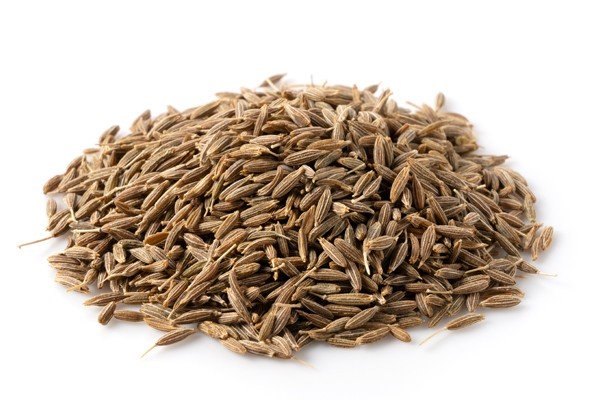Introduction
Zeera, also known as Cumin, is a well-known spice used for flavoring foods. It is filled with extended nutritional and medicinal values. It has been used since eternity by humanity for taste and aroma in daily foods.
Cumin is an annual plant that is one of the most popular seed spices and the oldest and most cultivated aromatic herbaceous natural product with numerous properties. Cumin has a distinctive strong flavor. Its warm aroma is due to its essential oil content. The scientific name of the Cumin is Cuminum cyminum.
It adds aroma and taste to the foods and serves as one of the best nutrients across the world. It is the primary food ingredient to seek the desired taste and aroma in our every day cooked foods.
Benefits
- White Zeera is used to treat every disease. It is a natural stabilizer of every body part and its chemical composition.
- Zeera or CuminCumin contains antiseptic values and fights bacteria, fungal infections, and inflammations.
- Within foods, white Zeera is a spice with an identifiably different aroma and taste that makes food digestible and tasty. It is also used in the preservation of foods for long-term uses.
- Cumin is highly filled with antioxidants.
- Zeera contains several health benefits, including rapid wound healing. It is used in treating wounds, fighting bacteria, coping with viral diseases, and helping in healing the wounds rapidly.
- Cumin is used as the best pain reliever for humanity, pains incurred by several diseases and inflammations.
- White Zeera creates a balance between the biochemical components in the human body to keep the health chart intact.
- It boosts metabolism and digestion and increases the gut health in which the liver and kidneys are included.
- Zeera causes strength in our body’s defense system, which helps fight several diseases.
- White Zeera fights cancer, cholesterol imbalance, blood pressure destabilization, blood sugar imbalance, digestive discomfort, neural repair, bone strengthening, balancing body temperature, and other chronic diseases.
- Along with increasing digestion, Zeera improves gut health which eventually benefits the liver, kidney, intestines, etc.
- It also helps the rapid absorption of nutrients from the foods, which causes boosting immunity. The most important feature of white Zeera offered by Lyallpur Organics is that it helps maintain fats and weight in the body.
Nutritional Values
White Zeera is known for treating every type of disease. It contains the following nutritious elements per 100 grams.
- Sodium 7%
- Potassium 51%
- Carbohydrates 14%
- Proteins 36%
- Vitamin C 12%
- Iron 368%
- Vitamin B-6 20%
- Magnesium 91%
- Calcium 93%
Pure and Natural White Zeera
Lyallpur Organics has conducted a detailed and thorough countrywide survey. We have discovered that Premium White Zeera being sold in the markets contained numerous harmful additives posing various threats to human health. In most cases, the expired Zeera is sold.
Artificial taste essences are added to increase the quantity and weightage for bulk sales. By doing so, the local distributors pose uncountable threats to human lives. Many of them have been banned and fined by the government too.
Lyallpur Organics has committed to fighting back this damaging situation that poked upon human health in this chaotic situation. We, at Lyallpur Organics, provide our customers the purest and the best organic, fresh white Zeera with no additives at all.
Lyallpur Organics’ white Zeera powder processing and treatment are pretty scientific and are based on research discoveries. Therefore, we have won the trust of millions in quality provision and sustenance. Our white cumin seed powder is certified by the Pakistan Council of Scientific and Industrial Research Organization.
Therefore, we are the only trusted brand supplying the best white Zeera powder and other spice powders. Our white cumin powder is free from all metallic and stone components and carries no additives.
Moreover, our treatment with Zeera powder is tried and tested minutely enough that we leave no room for any nutritional hazard in our product.
Careful Scientific Packaging
Among several other processes of treating white cumin seed powder, packaging is the critical step. We minutely monitor the process so that no extra additives can get mixed into it.
It is monitored because we care for humanity, and we do not want our fellow humans to suffer from impurities. Moreover, packaging is one of the most critical stages which cannot be ignored.
Lyallpur Organics takes the utmost care while processing the packaging of our products because these products can sustain the best quality only if they are packed with proper care. In packaging, the science of air tightening is involved, which does not let any bacterial or viral impurity get in and flourish upon the product.
It enables the quality of the product to last long for our day-to-day kitchen uses. We also provide custom packaging in bulk quantities for commercial use. In the case of bulk purchases, our prices can vary depending on the size of bulk ordered.
But one thing to remember is that we never compromise on the quality to supply the quantity. It is for this reason that we have won the trust of millions both in Pakistan and abroad.

